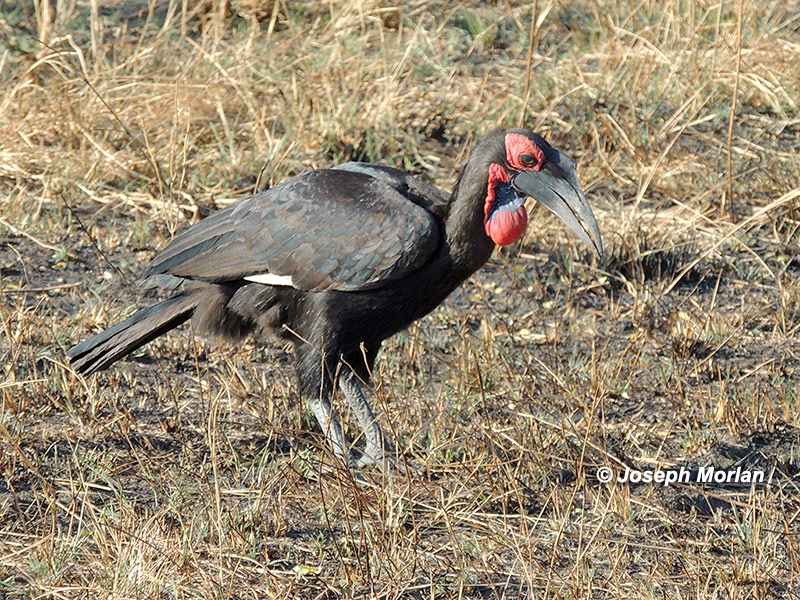
Note the gap between the closed mandibles. The dark patch of blue skin on the throat identifies it as an adult female. This is a large, spectacular but increasingly uncommon bird which forages on tip-toe through grassland. It has declined in much of its range, especially in Southern Africa where it is now critically imperiled. Elsewhere IUCN classifies this species as vulnerable. The main threats appear to be conversion of grassland to agriculture combined with bird's naturally slow reproductive rate.
They are obligate cooperative breeders with several helpers at the nest. It is reported that an apprenticeship of six or more years as a helper is required before adults can successfully breed. The young remain dependent for up to two years, the longest of any bird. Thus adults can breed only once every three years. However, they are reported to be very long-lived with a record of 70 years in captivity.
Formery, included with other hornbills in the family Bucerotidae, Ground-Hornbills birds are now placed in their own family, Bucorvidae comprising two species endemic to Africa. Some early authors used the scientific name B. cafer but that error was corrected by Browning (1992).
Nikon P510 Coolpix Point-and-shoot